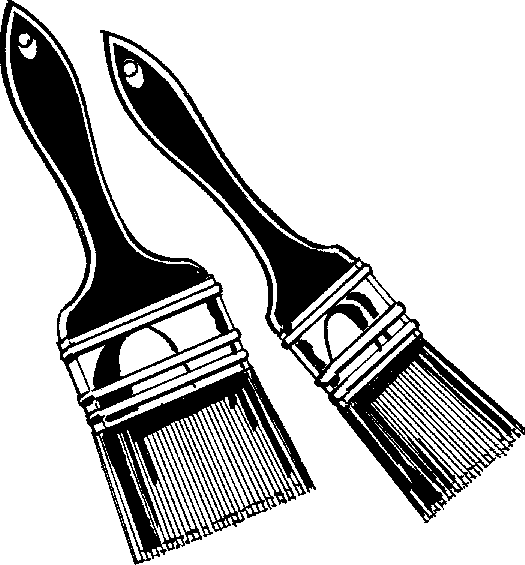
This makes them great for painting abstract art or other styles of artwork that don't require intricate precision or gentle brushstrokes. Even if the bristles of the brush become hard and brittle, they can still be used to apply paint onto a canvas, albeit in a more rough, expressionistic way. So I keep them, and use them as "alternative" art-making tools. Perhaps out of a deep sense of loyalty, I always have difficulty throwing brushes away after they've become crusty or frayed. So what happens if you do wind up with a crusty stump instead of a paintbrush? To look at the positive side, you don't necessarily have to throw it away. As soon as I think I'm done using one of the brushes, I'll thoroughly clean it before continuing with the painting. When I'm not using them, I rest them across the rim of my cup of water. On those rare moments when I do use more than one, I keep a close eye on the ones that are not in use, occasionally dipping them in water and shaking off the excess, just to keep them moist. What happens if you do happen to let acrylic dry on your paintbrush? Is all hope for the brush lost? Not so, read here to find out what you can do with crusty brushes!īecause acrylics dry so quickly and I want to avoid letting the paint dry on the brush, I typically work by using one brush at a time.
#Art paintbrush how to
Even if you know how to clean a paintbrush, there's really no way to de-crustify a crusty stump of a paintbrush. Dried acrylic paint on a brush basically ruins the brush, effectively turning it into a crusty stump. Whatever you do - don't let the paint dry on the brush! The longer it is allowed to dry on the brush, the harder the paint will become, which makes it more difficult (if not downright impossible) to remove.

The most important thing to remember in terms of brush care when working with acrylics is that acrylic paint dries very quickly.


 0 kommentar(er)
0 kommentar(er)
